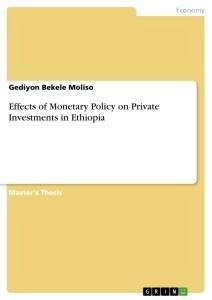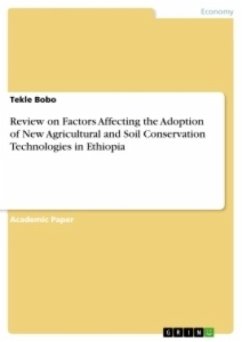Master's Thesis from the year 2021 in the subject Economics - Finance, grade: A, Ethiopian Civil Service University (COLLEGE OF FINANCE, MANAGEMENT AND DEVELOPMENT DEPARTMENT OF DEVELOPMENT ECONOMICS AND MANAGEMENT), course: DEVELOPMENT ECONOMICS, language: English, abstract: The main objective of this study is to investigate the effect of monetary policy on private investments in Ethiopia for utilizes annual time-series data from 1980 to 2020. To achieve the goal of this study, Autoregressive Distributed Lag (ARDL) Approach to Bounds test and Error Correction Model are applied in order to investigate the long-run and short run relationship between the dependent variable and explanatory variables. Data was collected from National Bank of Ethiopia (NBE). The monetary policy we used as indicators are Money Supply (M2), gross domestic saving (GDS), Bank credit (BC), Inflation rate (IR), and Real effective exchange rate (REER).This thesis contains five chapters. The first chapter is an introduction which consists of a background of the study, statement of the problem, research questions, and objectives of the study, significance of the study, hypothesis and scope of the study. The second chapter deals about a review of related literature review of theoretical and empirical studies, and the third chapter is researching methodology. Method of data collection and system of analysis are presented and analyzed in the fourth chapter, and the last chapter is conclusions, recommendation and policy implications.
Hinweis: Dieser Artikel kann nur an eine deutsche Lieferadresse ausgeliefert werden.
Hinweis: Dieser Artikel kann nur an eine deutsche Lieferadresse ausgeliefert werden.








